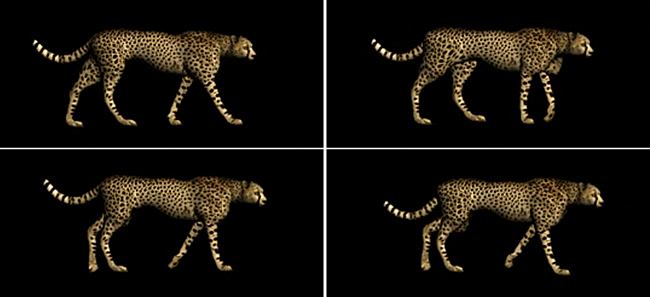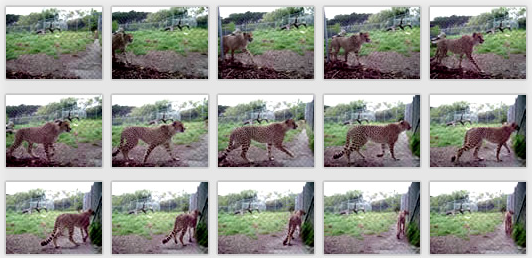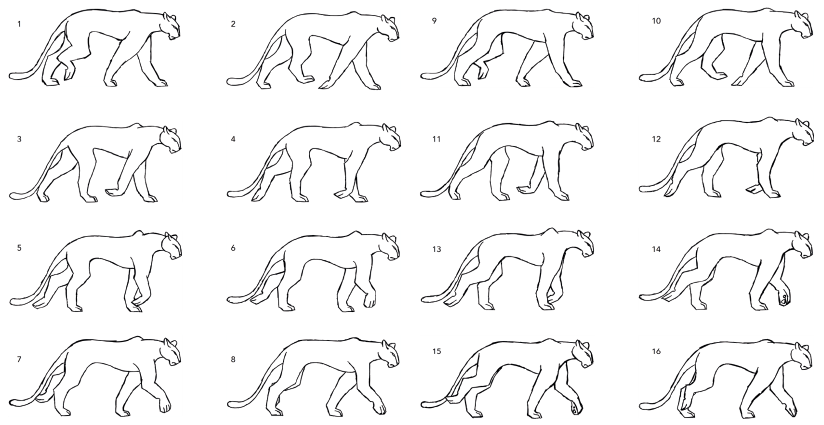
THE PROCESS
Several techniques have gone into making this walking cheetah in 3D.
Modelling & rigging
Firstly, I built a model of a cheetah after studying the bone structure of cheetahs walking and running.
This allowed me to identify the main bones necessary to build and rig the skeleton correctly, so the model could be animated.

Skinning
A 3D model of a cheetah looks better with a proper fur, so I searched for photos of cheetahs that could be used to construct the skin to be wrapped around the body.

Photo of cheetah in nature, which I masked before creating the texture file that would make the cheetah look realistic.
Walk cycle
After completing the model, it had become time to animate the walking cheetah. But how exactly does a cheetah walk?
The walk cycle is one of the most important principles in animation but also one of the most difficult techniques to master as it requires close attention to main and subtle movements of opposing limbs.
A basic human walk cycle consists of eight positions, which are then repeated.

A four-legged walk cycle, like that of a cheetah, is more complex as it consits of 16 positions

... somewhat similar to that of a panther.

I wanted to build the animation, not only based on animation theory and 3D modelling software, but also on real life examples. Therefore, I searched for videos and found one showing a group of cheetahs moving about in Tsavo, Kenya. I used that small and blurry video as a reference when animating my model through rotoscoping.
Rotoscoping

Still from the video that gave an impression of how cheetahs walk in nature.
In rotoscoping, a life action video is played one frame at a time, allowing animators to make adjustments to their work at each frame.
It was originally used in 2D animation where the main subject of the video was traced onto paper at each frame, whereby the animator would end up with a series of drawings that could be used for animation.
In 3D animation, where the model is completed and can’t easily be redrawn, the position of the subject – in my case an animal with moving limbs - is adjusted at each frame.
As videos are generally filmed at 24 frames per second, ten seconds of video consists of 240 frames, which makes rotoscoping a slow process, especially when it is important to pay close attention to details.
The short animated cheetah video on this page only shows the main movements of the four legs. Additional animation later had to be done to the head, tail and overall positioning to give the right impression of the animal’s movements.




